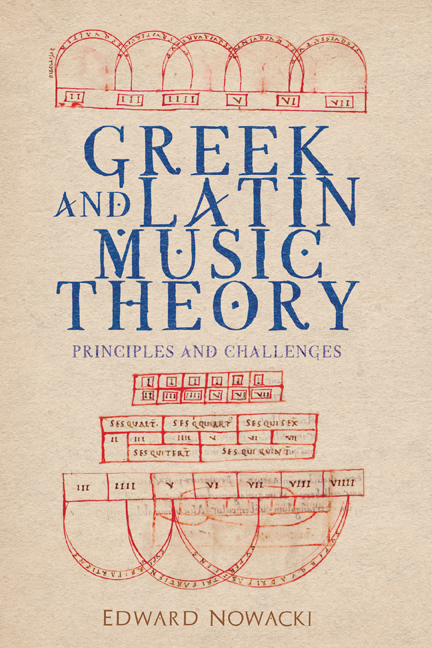4 - Pythagorean Harmonic Ratios from the Octave to the Comma by Continuous Subtraction
Published online by Cambridge University Press: 14 August 2020
Summary
Tuning systems in Western music, if you include tempered tunings, are quite numerous, especially in the sixteenth, seventeenth, and eighteenth centuries. They are of concern, however, more to builders of musical instruments and the keyboard players who must keep them in tune than to students of general music theory. One prominent exception is Pythagorean tuning. Because it was so thoroughly implicated in almost every aspect of Western music theory from antiquity to the end of the sixteenth century, it pays students of the history of theory to learn its fundamentals and to have them always at their fingertips.
To perform the following demonstration, you need only assume the ratios of 2:1 for the octave and 3:2 for the fifth. Though these measurements can be demonstrated on any stringed instrument, they are usually taken for granted in the general knowledge of most Western musicians without experimental proof. It is also necessary to remember that ratios are added to ratios by multiplication and subtracted from each other by division. For example, the addition of a fourth to a fifth is computed by multiplyingby. Thus, the octave. And by the same logic, the subtraction of a fourth from an octave is computed by dividing the larger ratio by the smaller. Thus, the fifth.
Begin with the octave and subtract a fifth. divided by is, the fourth. ⦁ Now subtract a fourth from the fifth. the whole tone.
Now compute the ditone by combining two whole-tones. the ditone.
Now subtract the ditone from the fourth. divided byis, the minor (i.e., smaller) semitone, or leimma.
Now subtract the minor semitone from the whole-tone. divided by is, the major (i.e., larger) semitone, or apotomē.
Now subtract the minor semitone from the major semitone. divided by is, the Pythagorean comma.
Because Western music is such a thoroughly constructed hybrid between acoustical tuning, with its simple aliquot divisors (, etc.) and a nested system in which each note is its own fundamental in a hierarchical regression of fifths (etc.), discrepancies are bound to occur. And since the discrepancies are not ad hoc, but derived from uniform principles that pervade each respective system, they emerge as a single numerical value at numerous points where the two systems come into contact. Consider the following examples.
- Type
- Chapter
- Information
- Greek and Latin Music TheoryPrinciples and Challenges, pp. 53 - 55Publisher: Boydell & BrewerPrint publication year: 2020

